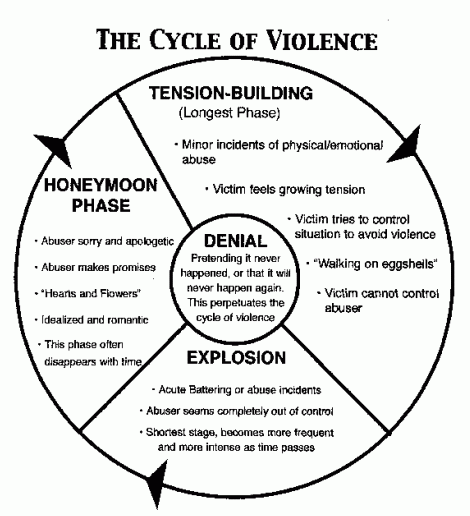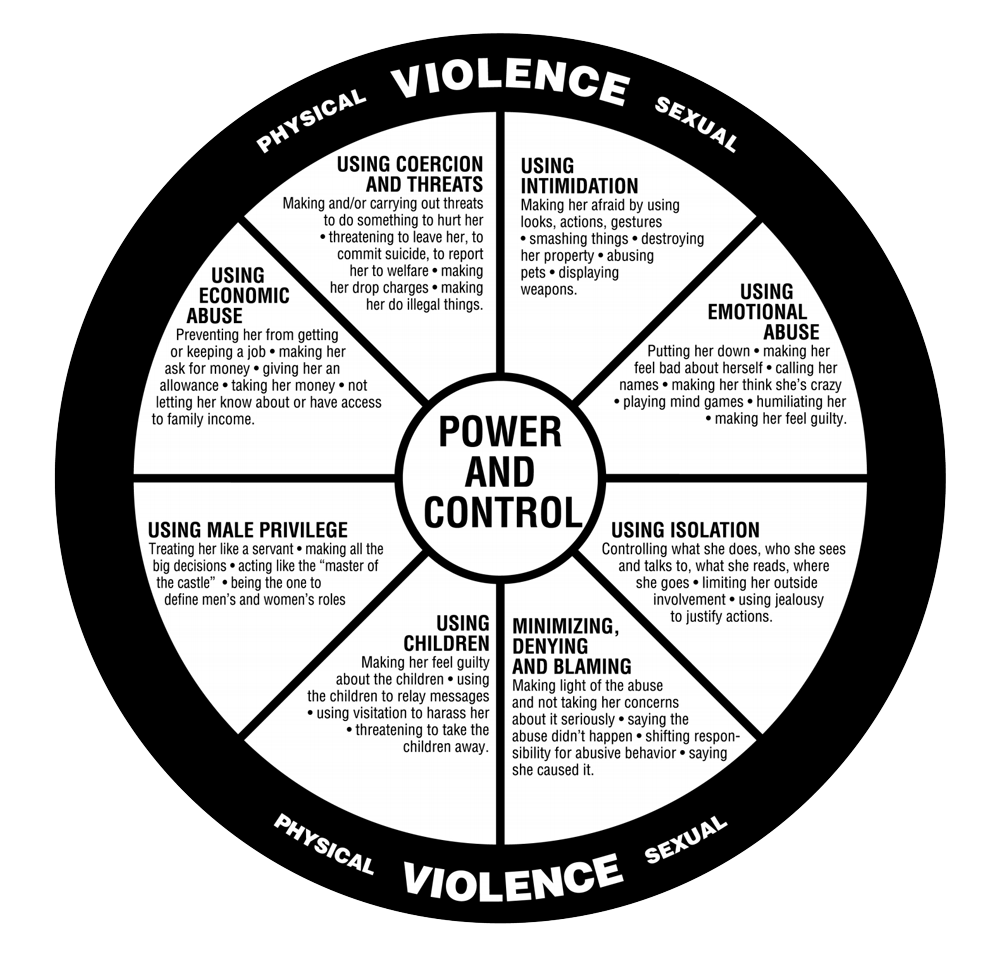Helpful definitions
Intimate partner violence: behaviour by an intimate or ex-partner that causes physical, sexual, emotional, financial, social, or spiritual harm.
Second-stage housing: longer term, individual housing, where tenants can live for an extended time. It offers programs and services to help with the transition to independent living.
Am I being abused?
Types of abuse: physical, sexual, emotional, financial, social, and spiritual. Does any of this sound familiar?
Physical abuse
- Any unwanted physical contact with the intent to harm, intimidate, or dominate
- Hitting with objects or threatening with a weapon
- Restraining, confining, not allowing somebody to leave
- Taking away mobility devices or withholding essential care
- Physical intimidation
Sexual abuse
- Sexual assault
- Any sexual contact without consent
- Badgering for sex with consequences if partner says no (ignores partner, threats of sex with someone else)
- Perpetuator having multiple sexual partners
- Forcing sex with others
- Pressuring partner to have sex in a way that doesn’t align with their gender identity
- Sexual comments or sharing sexual images publicly or online
Emotional abuse
- Yelling, intimidation, name calling, false accusations
- Threats to partner, children, pets (also abuser threating suicide)
- Inappropriate expressions of jealousy, accusations of affairs
- Making partner feel guilty for having a disability
- Degrading, insulting, gaslighting, disbelieving, or pressuring
- Stalking, or incessant texting, calling, or emailing
- Questioning the person’s sexual orientation or gender identity
- Mocking, devaluing partner to their children
Financial abuse
- Withholding money or taking money
- Forcing or denying work
- Requiring sexual acts for money
- Controlling banking, transactions and assets
- Identity theft which can be easier if the partner is the same sex
- Intentionally destroying credit or not paying bills
Social abuse
- Embarrassing partner in front of friends, family, family of choice, in public, or online
- Rude or alienating to partner’s family or friends
- Forcing public displays of affection that “out” a partner
- Showing up unexpectedly
- Having friends check up on partner
- Taking away cell phone, computer, or Augmentative and Alternative Communication (AAC) devices
Spiritual abuse
- Using religion to justify abuse or dominance
- Requiring sexual acts or drug use as religious acts
- Mocking beliefs
- Not allowing partner to practice beliefs
- Imposing beliefs
The Cycle of Violence
Many victim/survivors feel that the violence they experience is based on a cycle. Intimate partner violence is a repeated pattern of behaviour. This model highlights three phases: honeymoon, tension-building, and explosion. As abuse progresses over time, the explosion phase becomes more frequent and more severe.
The Power and Control Wheel
After interviewing more than 20,000 women who experienced abuse in an intimate relationship, Ellen Pence and Michael Paymar developed this model to explain the nature of abuse, to define the forms of abuse used to control another person, and to educate people with the goal of stopping violence and abuse.
Impact of abuse on children
Children exposed to intimate partner violence need to have hope that life will get better. A 34-page graphic novel was written by past Alice House counsellor Lori Morgan with the intention of helping children understand domestic abuse. It is titled Healing the bruises: through the eyes of a child: a journey from domestic abuse to safety.
What can I do?
An abusive relationship is often a confusing mix of love, fear, dependency, intimidation, guilt and hope. If this is happening in you, remember that you are not alone. Women of all ages, ethnic backgrounds and levels of income and education are affected by intimate partner violence. There are people that can help you and your children. Give yourself a chance at safety.
A note about recovery
Recovery is Freedom. Freedom from the past, freedom to choose your own future, freedom to enjoy your life and feel good about yourself.
Recovery is a Journey. True recovery is a continuing process. It means you are growing to your full potential. It is never a destination. There are no limits in recovery, only those that you impose upon yourself can stop you.
Recovery requires Change. You cannot recover by doing nothing. Many of us fear change because we do not know the final outcome and because it can be very stressful. Remember to take it a little at a time.
Recovery is One Day at a Time. You have been abused or exposed to an abusive relationship for a long time. It will take time to heal and then grow. The important thing is not how far you have gone but that you are on the way.
Recovery is Yours. You can give recovery to yourself and no one can take it away. There will be struggles and painful days, but the inner peace you develop as you recover will enable you to protect and care for yourself.
Recovery is Joy. There is no joy in being abused, but there is joy when you find the way to stop the abuse and find the way to help yourself. As you begin to live your life with meaning and happiness, you will experience joy.
Recovery is a Gift that you give yourself. The key to your recovery is inside you. Many people and groups will support you in your efforts to recover, but you alone will find the path that is right for your recovery. The strength that has allowed you to endure the abuse will also be the strength that will help you to recover.
Recovery is a Process. As you continue on your road to recovery, you will begin celebrating yourself and your survival. You are no longer living in fear because you have given yourself permission to respect, affirm and love yourself.



